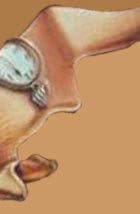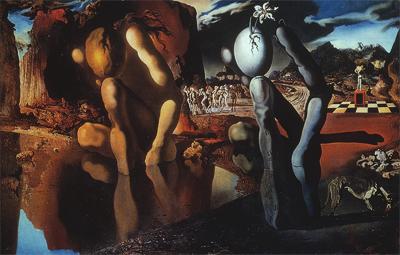 |
 |
||||
 |
|||||
 |
|||||
The painter’s use of androgyny in his artwork reflects one of the many ideas of Sigmund Freud that Dali incorporated into his works. The idea of the androgynous figure is that that person is neither a woman nor a man, but rather something more desirable: an “other.” It also incorporates the idea of the “other half” in romantic though. When a couple comes together it represents a merging of the man and the woman into a perfect being.
In Dali’s own works he depicts the androgynous figure as a vision of ideal beauty. The center of “The Metamorphosis of Narcissus” is an androgynous version of Narcissus, a person so beautiful and obsessed with his own beauty that he drowned when he could not tear himself away from his reflection in a pool of water. Based on this myth, this painting suggests that the way in which Narcissus is shown reflects absolute beauty. The massive figures in the forefront, particularly the one to the left, have lower body of a man with the upper body of a woman. Dali’s depiction of this figure hints toward his own love of the body belonging to neither a male nor a female. As someone turned off by the purely female body, the androgynous figure would be a more pleasing sight for a man like Dali.

Metamorphosis of Narcissus. 1936-1937. Salvador Dali.